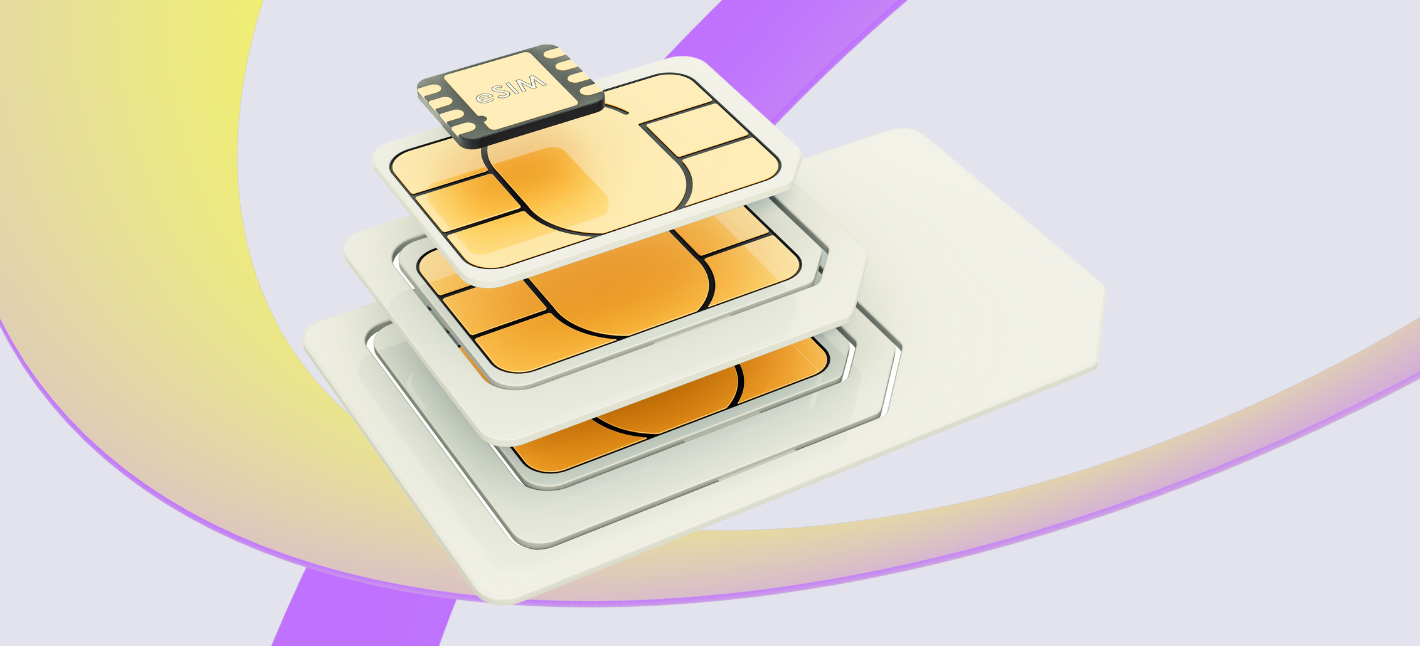Iot Sim Card Guide IoT SIM Cards
The landscape of the Internet of Things (IoT) is marked by a mess of connectivity standards and protocols designed to facilitate communication between devices, applications, and services - Sim Card For Iot. Each standard addresses specific wants and situations, making it essential to check these protocols primarily based on elements like scalability, range, power consumption, and utility suitability.

IoT connectivity standards embody a massive selection of technologies, together with Bluetooth, Zigbee, MQTT, CoAP, LoRaWAN, and cellular protocols such as LTE and 5G. Understanding the strengths and weaknesses of those standards can information businesses and builders in choosing the right resolution for his or her applications, in the end impacting the efficiency and effectiveness of their IoT ecosystems.
Bluetooth is a widely adopted standard identified for its short-range connectivity. Bluetooth Low Energy (BLE) provides decrease energy consumption, making it suitable for battery-operated gadgets. This protocol is particularly efficient for shopper IoT applications, corresponding to fitness trackers and smart residence units. However, its restricted range can be a important drawback for functions that require long-distance communication.
How Iot Sim Card Works About IoT SIM Cards
Zigbee, one other popular IoT protocol, is well-suited for mesh networking. This permits units to communicate over higher distances by relaying data between nodes. It operates on low energy and is often utilized in smart lighting and home automation techniques. Zigbee's power lies in its capacity to help a large quantity of devices inside a network, making it perfect for smart building functions.
On the other hand, MQTT (Message Queuing Telemetry Transport) is a light-weight messaging protocol designed specifically for low-bandwidth and high-latency networks. It excels in situations where real-time communication is crucial, such as in remote sensor networks or machine-to-machine (M2M) communication. MQTT is designed for efficient message supply, making it a top choice for IoT functions that require immediate information transmission.
Vodafone Iot Sim Card IoT SIM Card M2M Devices

CoAP (Constrained Application Protocol) is another messaging protocol tailor-made for constrained units on lossy networks. It is often utilized in applications with strict necessities regarding energy usage and information overhead. CoAP operates over UDP, which enables low-latency communication, making it perfect for real-time data switch in smart city purposes and industrial automation.
LoRaWAN (Long Range Wide Area Network) serves a different objective, focusing on low-power, long-range communication. Cheapest Iot Sim Card. It is especially efficient for IoT purposes that have to cowl massive geographic areas, such as agricultural sensors or city-wide monitoring methods. LoRaWAN networks can help 1000's of gadgets, providing scalability that many other protocols might lack.
Cellular networks, particularly LTE and 5G, provide a sturdy connectivity possibility for IoT units requiring high bandwidth and low latency. 5G is designed for enormous IoT implementations with low latency, enabling real-time communication for applications such as autonomous autos and smart healthcare. However, the worth of cellular connectivity can be prohibitive for smaller initiatives, making it important to gauge the budget alongside technical requirements.
Sim Card For Iot Devices IoT SIM Card

Security is another important consideration in the comparability of IoT connectivity standards. Each protocol has its own strategy to knowledge encryption and system authentication. MQTT, for instance, can benefit from SSL/TLS encryption, while CoAP presents Datagram Transport Layer Security (DTLS). Ensuring strong security measures is vital, particularly in eventualities involving delicate information, similar to health monitoring.
Interoperability is a big challenge within the IoT area, as myriad units and platforms often make the most of different protocols. Ensuring compatibility between varied methods can complicate implementation. Some standards, such as Zigbee and MQTT, present bridges or gateways that facilitate interoperability with different protocols, enabling more seamless integration within an see here IoT ecosystem.
Latency and bandwidth necessities differ greatly amongst totally different applications. Low-bandwidth, high-latency functions like smart agriculture might find success with LoRaWAN, whereas real-time purposes such as video surveillance could necessitate high-speed connectivity provided by 5G. The choice of connectivity protocol ought to align with the precise necessities of the appliance in question to foster optimum performance.
Best Iot Sim Card Built For Bigger Internet of Things SIM Cards
Environmental factors additionally play a task in determining essentially the most appropriate connectivity standard. Urban environments might present challenges for protocols like LoRaWAN as a outcome of obstruction and interference, whereas BLE might battle with distance in large-area deployments. Understanding the bodily environment in which the gadgets will operate is important for making certain dependable connectivity.
Deployment scenarios, whether they contain urban, rural, or industrial settings, greatly influence the choice of connectivity standards. Industrial environments usually necessitate protocols that may deal with high-bandwidth knowledge streams, while smart residence purposes may prioritize low-power options. Different settings will dictate the parameters of the IoT deployment, necessitating a tailored method.
In conclusion, the comparison of IoT connectivity standards and protocols reveals a various array of options, every with its distinct advantages and trade-offs. Understanding the particular needs of an utility, including distance, energy consumption, and data transmission necessities, is important in choosing essentially the most appropriate standard. The developments in the evolving panorama spotlight the significance of seamless communication, sturdy safety, and interoperability to create cohesive and environment friendly IoT ecosystems. As know-how continues to advance, the necessity for adaptable and scalable solutions becomes much more pronounced, guiding future developments in IoT connectivity.
- Various IoT connectivity standards, such as Zigbee, Z-Wave, and LoRaWAN, cater to totally different utility needs, with Zigbee focusing on short-range low-power communication and LoRaWAN emphasizing long-range capabilities.
Iot Sim Card South Africa Multi-Network M2M SIM global Internet Things
- Bluetooth Low Energy (BLE) is perfect for purposes requiring fast system pairing and minimal energy consumption, making it suitable for wearables and short-range smart house gadgets.
- Cellular IoT standards like NB-IoT and LTE-M are tailor-made for devices demanding wider protection with network reliability, perfect for agricultural and transportation sectors.
- MQTT and CoAP are prominent software layer protocols for IoT, the place MQTT excels in light-weight message transport while CoAP is designed for constrained environments with decrease overhead.
- Security remains an important differentiator among protocols; for instance, Zigbee employs AES encryption, whereas standards like LoRaWAN use end-to-end encryption to guard data integrity.
Sim Card Iot Freeway simHERO IoT Prepaid SIM
- Some connectivity standards prioritize scalability; for example, Thread helps mesh networking, permitting a quantity of devices to communicate and not utilizing a central hub, enhancing network resiliency.
- The power consumption profiles of protocols can range: LoRaWAN is very energy-efficient for low-frequency updates, while protocols like Wi-Fi require extra substantial power, making them less suitable for battery-operated gadgets.
- Different protocols might provide various levels of interoperability; standards like AllSeen Alliance goal to create a unified ecosystem, whereas others might require specific gateways or bridges for cross-standard communication.
Iot Sim Card copyright IoT SIM vs Normal SIM
- The alternative of protocol often is dependent upon environmental considerations, with standards like Zigbee performing properly in indoor settings as a result of its robust anti-interference capabilities in comparison with others like LoRaWAN, which is best suited for rural purposes.
What are the principle IoT connectivity standards?
The main IoT connectivity standards embody MQTT, my response CoAP, HTTP, LoRaWAN, Zigbee, and NB-IoT. Each standard serves specific use instances, with varying degrees of effectivity, energy consumption, and range, catering to numerous IoT applications.
Global Nb-Iot Sim Card The best IoT SIM card
How do I choose the right protocol for my IoT application?
Selecting the suitable IoT protocol depends on factors like information volume, power consumption, latency requirements, and community topology. Analyzing these aspects alongside the particular operational environment will information you in path of the best suited choice.
What are the variations between LPWAN and traditional wireless protocols?
Cellular Iot Sim Card Marketplace
LPWAN (Low Power Wide Area Network) protocols, like LoRaWAN and NB-IoT, focus on long-range communication with low power consumption, making them ideal for battery-operated devices. In contrast, conventional wi-fi protocols like Wi-Fi and cellular offer greater bandwidth and faster connectivity, however they consume more energy and have shorter ranges.
Is safety a significant concern in IoT connectivity standards?
Yes, security is paramount in IoT connectivity. Protocols like MQTT and CoAP incorporate security features like authentication and encryption. It's important to know these features when choosing a protocol to make sure information protection and device integrity.
Iot Sim Card South Africa What is an IoT SIM Card?
Can a number of protocols be used in a single IoT deployment?
Absolutely. Many IoT deployments make the most of a mix of protocols to optimize performance and protection. For example, you may use LPWAN for long-range sensor knowledge and Wi-Fi for native, high-bandwidth communication.

What are the advantages of utilizing MQTT over CoAP?
Iot Global Sim Card IoT SIM Card Data Plans Pricing
MQTT is designed for high-throughput messaging and low bandwidth, making it appropriate for environments with frequent updates. CoAP, then again, is optimized for constrained gadgets and networks, making them a better fit for sure functions. Choosing between them depends on specific software necessities.
How does community architecture influence IoT protocol choice?
Network architecture affects protocol selection by dictating components like vary, scalability, and connectivity. A centralized architecture might profit from protocols like HTTP, whereas a decentralized structure may lean in the course of MQTT or CoAP for efficient message routing.
Are there future tendencies in IoT connectivity standards?
Sim Card For Iot Prepaid 4G SIM Card Data
Yes, future trends embrace elevated adoption of 5G technology, enhanced security measures, and interoperability between current and new protocols. Emerging standards like Matter goal to unify IoT devices, making integration and communication more seamless across platforms.